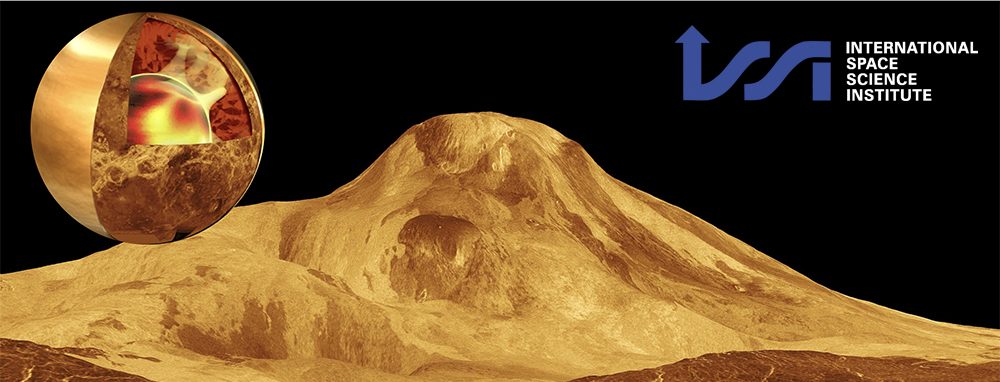
ISSI Workshop Participants
The evolution of Venus is, at present, poorly known, despite it being our closest planetary neighbour. The relatively small number of impact craters implies that its surface is much younger than that of Mars and the Moon; their quasi-random distribution shows that Venus does not exhibit Earth-like plate tectonics. This has led to suggestions of global resurfacing – but how this happened is an open question. Whether resurfacing occurred catastrophically or in a steady manner has major implications for interior and climate evolution. Another key question is absent plate tectonics, how are interior processes linked to the surface deformation and volcanism. There is evidence of subduction in up to a dozen locations. Subduction is the first step in initiating plate tectonics, and raises the question of why Venus appears to lack plate tectonics.
Venus is particularly important to our understanding of habitability. Venus’ enhanced D/H ratio suggests that it has lost large amounts (possibly several terrestrial oceans) of water, but it is not clear whether it condensed (as happened on Earth) or whether this water was lost in the steam atmosphere phase; if it had a liquid water ocean phase, Venus may have been habitable for billions of years. There is no consensus on how much water there is in Venus’ interior, and how much of this water has been outgassed, a question which has important implications for Venus’ atmospheric water and in turn for its habitability through time. Exoplanet transit detection surveys have a bias to detecting exoplanets close to their parent stars: the growing number of such Venus-like exoplanets discoveries emphasizes the relevance of Venus in the search for habitable exoplanets.
Now is a pivotal time in Venus exploration. Since the Magellan orbiter provided initial global radar imaging and altimetry (1989–1994), and Venera landers measured major and heat- producing elements in several locations (1975–1985), there have been considerable advances relevant to understanding Venus’ evolution. There have been new observations of surface emissivity from Venus Express, and of surface properties from Arecibo; new analyses of existing data; new hypotheses for the origin of plate tectonics; advances in the numerical tools and laboratory simulation of interior convection; and new modelling of the evolution of rocky earth-sized exoplanets, in need of observational constraint using Venus as a reference point.
A new fleet of Venus missions is in development. These include radar-equipped orbiters (such as the ESA-led EnVision M5 orbiter and NASA-JPL’s VERITAS orbiter proposals), entry probes / landers (such as NASA-GSFC’s DAVINCI proposal or Russia’s Venera-D lander), and various concepts to detect seismic activity, whether from landers, from balloons or from orbit. Furthermore, Venus missions have been considered in Japan and China and ISRO has announced a likely Indian space orbiter proposed for launch in 2023. The science observation strategy for all of these missions is in development now and in the coming few years; therefore, now is an ideal time to collate knowledge of Venus evolution scenarios and the observations needed to distinguish between them.
The workshop and the resulting book will cover the following main themes:
- Initial conditions: Accretion & early Venus
- Observational constraints on present & past surfaceprocesses
- Modelling Venus’ interior regime & volatiles through history & comparison with Earth
- Future exploration: Measurements needed for constraining Venus evolution.
The image shows Maat Mons, one of the major volcanic shields on Venus in a false colour radar image from the NASA Magellan mission (Image Credit: NASA). The insert has been compiled by A.C. Plesa from a Magellan mosaic of the planetary surface and her calculations of convection currents in Venus’ mantle (© A.C. Plesa, DLR)
